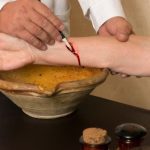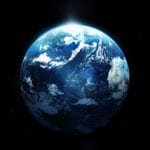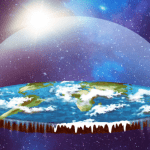 Humans
Humans  Humans
Humans  Movies and TV
Movies and TV 10 Major Movies That Filmed Without a Script
 Weird Stuff
Weird Stuff The Crazy Stories Behind 10 Legendary Spite Houses
 Mysteries
Mysteries 10 Puzzling Disappearances at Zion National Park
 Facts
Facts Top 10 Cool Facts about 7-Eleven
 History
History 10 Merciless Monarch Murders You May Not Know About
 Animals
Animals 10 Heartwarming (Scientific) Stories about Cats
 Music
Music Ten Singers Who Absolutely Detest One of Their Hit Songs
 Our World
Our World 10 Natural Phenomena That Challenge Our Understanding of Earth
 Weird Stuff
Weird Stuff 10 Cool and Creepy Facts about the Nottingham Caves
 Humans
Humans 10 Fascinating Beliefs of Indigenous Cultures
 Movies and TV
Movies and TV 10 Major Movies That Filmed Without a Script
 Weird Stuff
Weird Stuff The Crazy Stories Behind 10 Legendary Spite Houses
Who's Behind Listverse?

Jamie Frater
Head Editor
Jamie founded Listverse due to an insatiable desire to share fascinating, obscure, and bizarre facts. He has been a guest speaker on numerous national radio and television stations and is a five time published author.
More About Us Mysteries
Mysteries 10 Puzzling Disappearances at Zion National Park
 Facts
Facts Top 10 Cool Facts about 7-Eleven
 History
History 10 Merciless Monarch Murders You May Not Know About
 Animals
Animals 10 Heartwarming (Scientific) Stories about Cats
 Music
Music Ten Singers Who Absolutely Detest One of Their Hit Songs
 Our World
Our World 10 Natural Phenomena That Challenge Our Understanding of Earth
 Weird Stuff
Weird Stuff 10 Cool and Creepy Facts about the Nottingham Caves
10 Fascinating Beliefs of Indigenous Cultures
Indigenous cultures had and still have a profound connection to the natural world. These incredible people comprise 6% of Earth’s population across 90 countries. Indigenous people have been credited with developing several technologies and have contributed much to science.
They also speak more than 4,000 languages and believe in things we cannot begin to comprehend in this modern world. For instance, the Baka people believe their ancestors walk alongside elephants through the forest. The Arhuaco people believe it is their responsibility to care for Earth and that famines and droughts are the consequences of failing to keep the planet balanced. The Aymara people believe your future is already behind you and the past in front of you, so you cannot see the future.
This list includes just ten more of the hundreds of fascinating beliefs of Indigenous cultures that capture the imagination of millions worldwide.
Related: 10 Times Contact Was Made With the Last Uncontacted Tribe
10 The Quechua People
The Quechua people include many Indigenous South American tribes. They are direct descendants of the Incas and live scattered throughout the Andes Mountains. The Inca people spoke the Quechua language, consisting of several dialects. The Quechua language, one of Peru’s three official languages, is still spoken today by millions living in Peru, Argentina, Bolivia, Chile, and Ecuador.
In fact, the Quechua way of life remains steadfast in the more remote villages in the Andes. Here, neither men nor women are considered adults until they get married, and most marriages are arranged. The old Quechua beliefs also largely remain. The Quechua people believe that the gods of the mountains, harvest, and water send punishments when Mother Earth is provoked. Punishments include illness, bad luck, severe weather, and accidents.
Archeologists have found evidence of human sacrifice to appease the gods and spirits sending these punishments. Today, some still offer sacrifices in the form of a dead llama fetus interred in a wall or foundation of a new house.[1]
9 Maya People
The Maya culture is believed to have emerged between 7000 BC and 2000 BC. The hunter-gatherers left their nomadic way of life behind in favor of permanent homes. The first to build permanent settlements came from South America. They were responsible for developing maize by 4000 BC and also started growing other vegetables like beans and squash.
It is thought that the Maya adopted their rituals as their culture developed alongside the Olmec civilization. They built cities, created trade networks, and introduced their infamous calendar. The Maya were also known for sports, warfare, irrigation, and writing. They believed in many gods, including the maize god. Their tradition said their gods created humans first out of mud, then wood, and finally, out of corn. Maya beliefs also included that divinity was in everything, including inanimate objects.
The Maya gods each represented a part of life. But they had to be pleased, so the Maya would sacrifice animals and humans as offerings. They also believed that burying their dead underneath floors would protect the living. The Mayans still exist, with over six million descendants in Central America. These descendants carry on their ancestors’ traditions and speak more than 30 languages originating from ancient Mayan.[2]
8 The Kalinago
The Indigenous Kalinago people are the last of their kind in the Caribbean. And sadly, they are facing the constant threat of climate change. The Kalinago territory is still recovering from the devastating Hurricane Maria disaster, which was the strongest hurricane to ever strike Dominica.
However, long before climate change threatened anyone, the Kalinago were a dominant tribe. They lived in South America, Dominica, the Windward Islands, Barbados, and Trinidad and Tobago. Archaeologists once believed that the Kalinago’s (previously known as the Caribs) ancestors came from the mainland and took the islands away from the Igneri by force. However, recent evidence suggests that a smaller group migrated and lived alongside the Igneri.
The Kalinago would traditionally hang body parts of deceased people in their homes, as they believed it would bring them good luck. Christopher Columbus saw these body parts when he first arrived and assumed the Kalinago were cannibals. Because of this assumption, they were called Caribs. The Kalinago were also polytheists who believed in nature spirits. They practiced shamanism and believed that an entity called Maybouya personified evil. Kalinago shamans would cast spells and lead sacrificial rites to pacify this evil spirit.
Today, the Kalinago people are trying to preserve their indigenous culture while fighting climate change. They respect and revere boa constrictors and spiritual animals and have an admirable connection with their natural environment. [3]
7 Maasai
The Maasai tribe is infamous for their fearlessness. Until recently, Maasai boys could only be called warriors if they managed to kill a lion with a spear. Their spears and red robes (shukas) make them instantly recognizable, and even though they were driven from their land in Kenya by British troops in the early 20th century, they instilled respect in these soldiers.
This proud semi-nomadic tribe is one of a few that still keep to most of their traditions and beliefs. Around 900,000 Maasai are left, mainly speaking Maa, Swahili, and English. They hold initiation (coming of age) ceremonies that last more than ten days. During these ceremonies, young men stand in a line and chant while a line of women stands across from them, singing.
The Maasai believe their appearance (clothes and jewelry) protects them from evil spirits. They also live according to a set of laws called Enkanyatta, which proclaims all life sacred and compels the Maasai to live in harmony with nature. They believe that diviners are intermediaries between our world and the spirit world. Some believe in a god called Enkai, who manifests himself in color.
When he manifests as Enkai-Narok (black), he brings rain, thunder, grass, vegetation, and prosperity. When he manifests as Enkai-na-Nyokie (red), he brings hunger and famine. This manifestation is typically experienced in the dry season. However, many of today’s Maasai generation are Christians, while a few are Muslim.[4]
6 The Quileute
If you have seen any of the Twilight films, the name Quileute will ring a bell. The real-life Quileute people may not turn into huge wolves, but their history and beliefs are still fascinating. The Quileute tribe has lived in La Push, Washington, for thousands of years. Their original territory extended far beyond the one-square-mile-long village to the Pacific coastline, Mount Olympus, and the rain forests.
The ancient Quileutes believed a raven hung up the sun in the sky. They would also “challenge” whales. They made whaling canoes that could hold tons of cargo, and their canoe design is still implemented in modern clipper ships.
The wolf part of the Quileute tribe’s history comes from folklore. Quileute myth states that a mythical character called Dokibatt and K’wa’iti created the first Quileute tribe member by transforming into a wolf. The tribe’s beliefs have nothing to do with wolves, however. The Quileute people believed that each person had their own guardian. They would pray to this guardian, the sun, and the universe. After colonization and disease began to impact the tribe, much of their religion was lost.[5]
5 Indigenous Australians
Indigenous Australians are likely the oldest human population living on a continent that is not Africa. They have lived in Australia for more than 65,000 years and are represented by over 250 language groups in the country. Moreover, 3% of the Australian population boasts an Aboriginal or Torres Strait Islander heritage.
Aboriginal Australians are linked to mainland Australia, while Torrest Strati Islanders refer to the peoples of the islands in the Torres Strait. The Aboriginal and Torres Strait Islander group comprises hundreds of cultural tribes and clans. When the colonial invasion happened, 600 dialects were spoken, in addition to the 250 languages, in more than 500 nations.
Aboriginal spiritual beliefs are referred to by a general term: The Dreamtime. This term encompasses spirituality, existence, and creation. It explains how spirits created the land and the people. These spirits also created animals, rivers, hills, and greenery. The Torres Strait Islanders are described as sea people. Their spiritual beliefs revolve around the Tagai, which says people are connected to the world order and that everything has its own place.[6]
4 The Māori
Māori ancestors have lived in Aotearoa (New Zealand) for over 1,000 years. When the British arrived and tried to seize land, they started inevitable wars with Māori. The Treaty of Waitangi was signed in 1840 to protect Māori interests. However, because it clashed with the New Zealand Settlements Act of 1863, large-scale land seizures went again on the South and North Islands. It was only in 1975 that the Waitangi Tribunal tried to address this by negotiating land deals. However, there is still a long way to go.
Despite this drawn-out conflict, New Zealand remains steeped in incredible Māori folklore and tradition. It is what draws and captivates tourists from all over the world. Historically, Māori follow a polytheistic faith similar to the beliefs of other Polynesian cultures. According to this faith, several gods or atua inhabit our world. They are known as the children of Ranginui (Sky Father) and Papatuanuku (Earth Mother), and it is said that they created the planet by pushing them apart. Each atua rules its own part of nature and life.
Māori believe that each person’s uniqueness comes from mauri, which is similar to a soul. People get spiritual strength and power from mana, which is obtained from the atua. It is said that people can inherit or earn mana with their social standing or specific skills.
Māori are also known for their various traditions. For instance, te moko, or traditional tattoos, below the eyes indicate physical accomplishments, while above the eyes, they highlight spiritual wisdom. Māori tradition also states that families must help the souls of their deceased loved ones reach their ancestors in the afterlife. If they do not do this, the deceased will become angry and take someone with them.[7]
3 Sami People
Like Māori, the Sami people have been around for a long time. They are the descendants of nomadic tribes who lived in northern Scandinavia. At the beginning of AD 1000, the Sami were scattered across Finland as the Finns entered the country. Today, they are found only in the northern extremes.
It is not clear where the Sami originated. Some historians believe they are part of the Paleo-Siberian peoples. Others are convinced they originated from central Europe. In modern times, the Sami live not only in Finland but also in Russia, Norway, and Sweden. Around half of the total Sami population (80,000) live in Norway. Just over 2,600 Sami people living in Norway earn a living from herding reindeer. This fits with the Sami people’s past, during which they supported themselves through hunting, fishing, and livestock farming.
Despite this, most Sami people live a modern life in the 21st century. But at the same time, some hold fast to their traditions and beliefs. They believe natural objects like rocks, trees, and animals possess souls. Their beliefs emphasize a deep respect for both the dead and animal spirits. The Sami people’s unwavering love and respect for bears, for instance, stems from traditional bear worship.
Some Sami people believe in a forest spirit, Laib Olmai, who is associated with forest animals. Laib Olmai’s favor is (and was) highly sought after to the extent that believers pray and make offerings to him twice a day.[8]
2 Khoisan
Khoisan is the all-encompassing term for the Indigenous tribes of Southern Africa. Many historians believe the Khoisan consists of only two groups: the Khoi Khoi and the San. People who belong to this group speak click languages and are recognized as part of the earliest distinct human genetic groups. Many Khoisan peoples descended from early anatomically modern humans. (Some historians believe that the Khoisan was actually a source for anatomically modern humans.)
Paleo anthropologists also believe that the San people, who were hunter-gatherers, lived in South Africa 20,000 years before anyone else. Evidence of the San people’s history is seen at rock art sites across the country. The Khoe (Khoi Khoi) people arrived 2,000 years ago, bringing a new way of life with them.
German explorer Leonhard Schulze coined the term Khoisan, referring to both the San and Khoe people. However, these two groups prefer their own identities in modern times and want to be referred to as San and Khoesan.
Many individuals within the Khoisan group believe in a superior being who controls the environment and influences everyday life. Some Khoisan belief systems see this god worshipped through sacrifices and rituals. The Khoisan also believe in an evil spirit that unleashes disease, illness, and bad luck on Earth. There is also dualism at play here, with some believing that one should never attempt to invoke the superior being in case it provokes his evil counterpart.[9]
1 The Navajo
The Navajo Nation is the second most populous Indigenous group in the U.S., with around 300,000 individuals. Most live in Arizona, Utah, and New Mexico and speak an Apachean language. In prehistory, the Navajo and Apache people migrated from Canada and settled in the Southwest, adopting farming practices from the neighboring Pueblo people.
When the Spanish arrived in the 1500s, they brought conflict over land and resources with them. However, the Navajo people resisted them fiercely, and this saw the start of the Navajo Wars, which spanned three periods of conflict. The Navajo also suffered the brutal and tragic Long Walk during the 1860s. However, they were resilient during this hardship, and today, the Navajo cultural identity is stronger than ever.
This cultural identity includes the belief that Navajo people emerged into this world (Fourth World) after journeying through three prior worlds. Living in harmony with the universe and all living things is also central to the Navajo culture. This includes Earth, sky, trees, plants, and animals. According to the Navajo Nation, there are also two classes of people: Holy People and Earth People. Holy People have immense power and can influence Earth People.
Moreover, the number 4 holds sacred significance to the Navajo people. This number is linked to the four cardinal directions, inseparable from the four sacred mountains, seasons, and colors. The colors are white for the east, blue for the south, yellow for the west, and black for the north. The east refers to dawn, south to day, west to evening, and north to night.
The number 4 also appears in the Navajo creation story. The First Man scattered four stones in the four cardinal directions. The black stone went toward Hesperus Peak in Colorado, while the blue stone went to Mount Taylor in New Mexico. The white stone reached Blanca Peak in Colorado, while the yellow stone went toward the western San Franciso peaks. The First Man breathed on the stones four times, after which they created a Hogan (traditional shelter). The Hogan transformed into the world and created the four sacred Navajo mountains.[10]








